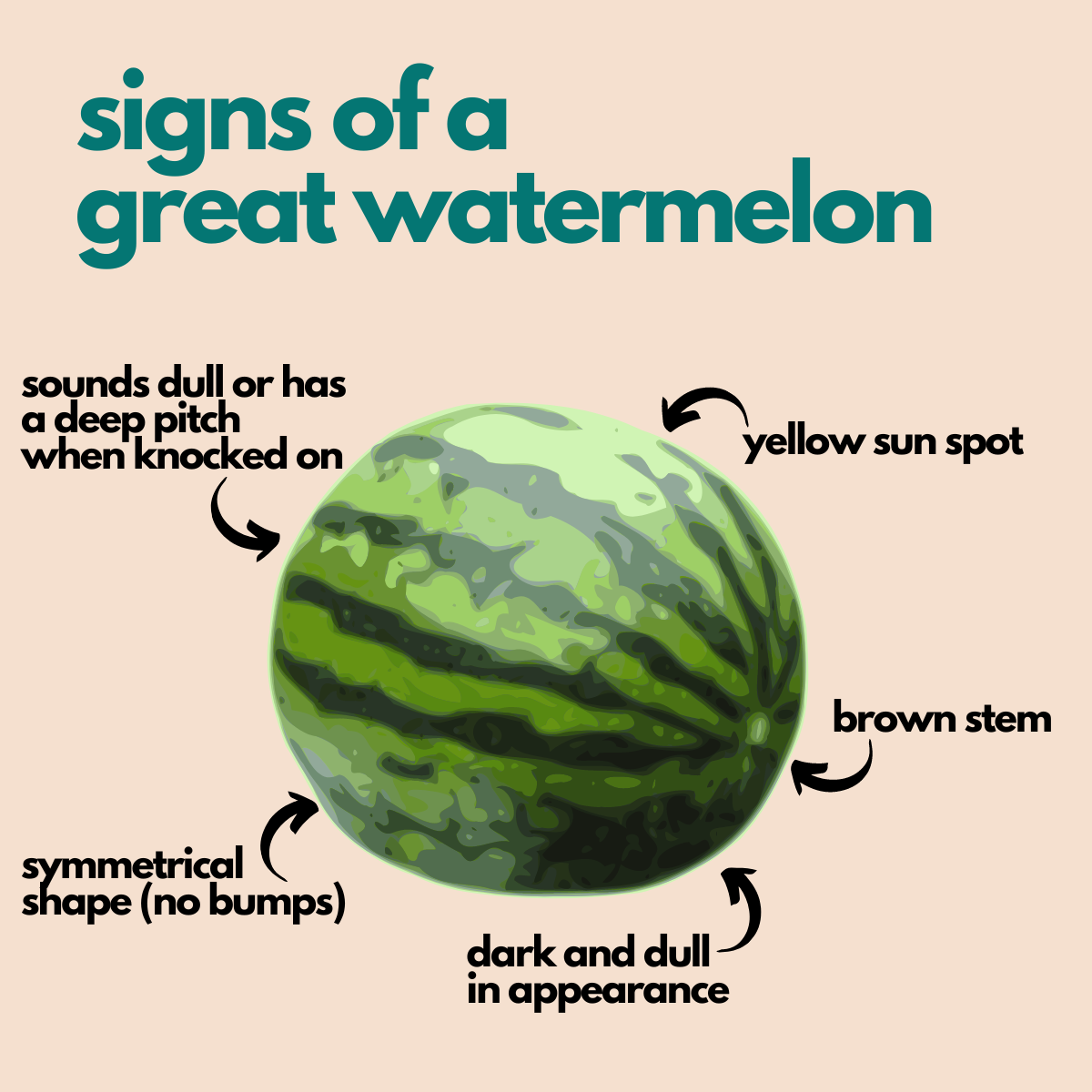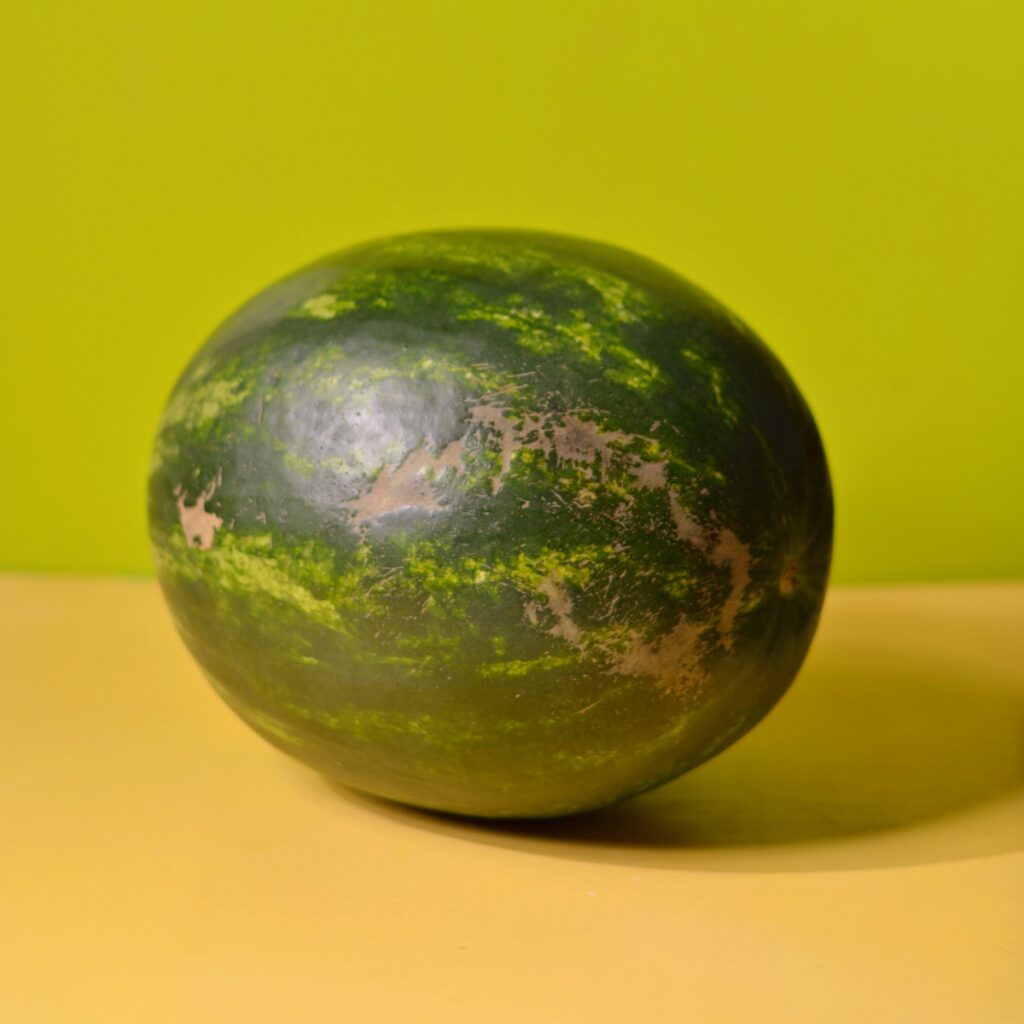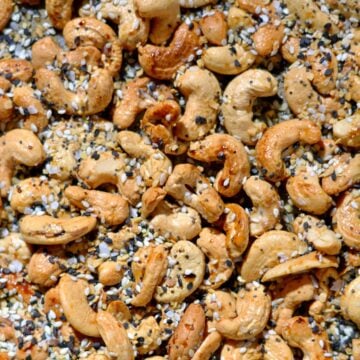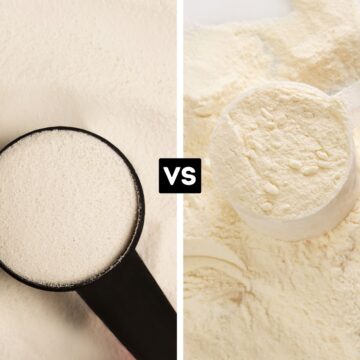If you have ever been intimidated by the large bins of watermelons trying to determine the best one, you are not alone. To ease this frustration, we have a comprehensive guide on just how to pick the perfect watermelon!

Want to save this recipe?
Enter your email below & we'll send it straight to your inbox. Plus you'll get fun new recipes from us every week!
It's watermelon season and as a watermelon lover, I have become very well-versed in how to pick good watermelons. You can often find me at the store knocking and inspecting watermelon after watermelon until I find the one that is just so!
But, there is a method to my madness and I am going to teach it to you. I'll cover 5 tips that are the best way to ensure you'll get a great watermelon at the grocery store. This will save you time and money!
Don't have time to go in-depth? Here's a quick guide to picking a good watermelon!

Jump to:
All About Watermelons
Before I go into depth about picking good watermelons, it's important to understand a little about this juicy fruit. Watermelon is 92 percent water and since it's completely edible (70% flesh and 30% rind), watermelon is the most cost-effective fruit at 17 cents per serving.
There are a couple of types of watermelon to choose from. Mini watermelon, seeded watermelon, and seedless watermelon. Mini watermelons can be seeded or seedless.
Seedless watermelons have white seeds that are actually empty seed coatings that haven't matured. Seedless and seeded watermelons are otherwise identical. Due to higher demand, 90% of the domestic crops in the world produce seedless watermelons.
No matter the kind of sweet watermelon, the methods listed below will be the same regardless of size or shape.

5 Tips To Picking The Best One
When searching for the perfect watermelon, we're trying to get the sweetest, juiciest bite. Because there's nothing better on a hot summer day than tasty watermelon. And, there's nothing worse than cutting into a bland or over-ripe watermelon.
A few key features contribute to a sweet, ripe watermelon - the time it spent in the field, the percentage of water within the flesh, and how the plant was initially pollinated. This should go without saying, but while watermelons can be available all year round, try to buy them when they're in season (summer months) for the best luck.
Field Spot And Webbing
A ripe watermelon should have a yellow field spot (also known as a ground spot) on the underside of the melon and webbing anywhere around the melon. Both of these indicate the watermelon was given proper time to ripen outside. Watermelon doesn't continue to ripen after being picked so it's important to pick one that was harvested when ripe!
The yellow patch is where the watermelon sat on the ground. So, the longer it sat on the ground to ripen, the more yellow the spot should be. This spot is also known as the yellow belly.
Webbing is another sign of a ripe melon. While webbing isn't as clear an indication of ripeness, webbing is where the bees initially pollinated the flower. The webbing or sugar spot is thought to be where sugar has been seeping out and pooling. The watermelon on the left is an example of one with webbing, while the one on the right is an example of a yellow field spot.


Sound
This is the method I rely on to consistently pick good watermelons. Even though this isn't a widely known method, watermelon enthusiasts believe it to be a good sign of a sweet melon. Plus, it's a method based on science!
The basic principle is that a riper watermelon has more water in it. When you know something has water in it you'll hear a certain pitch depending on how much water is in that thing.
More water (juicy watermelon) results in a dull sound or deeper pitch. Less water (under-ripe watermelon) results in a higher-pitched knock. This is because a watermelon with a lot of water is more dense than one with less water.
This method requires knocking on a few watermelons to compare the pitches between them. Find the one with the deepest pitch and there is a good chance you are picking a great watermelon! Check out our video below to hear exactly what a good watermelon sounds like!
Shape And Weight
Look for a watermelon with an even or uniform shape. This could be round, oval, or elongated, but avoid ones with bumps, scratches, soft spots, or pits. These defects indicate an uneven distribution of nutrients and water and infection from a bug or other means.
You can see below that the watermelon has many odd angles and bumps, indicating it isn't a good watermelon. Be sure to watch the video above to see if we are right!

Stem
Look for a stem end or point where the stem is brown with a small dent. This indicates that the watermelon ripened on its own and fell off the vine. An under-ripe watermelon will have a green stem or green spot where the watermelon was cut off. If the watermelon still has a stem on it, it should have a dried tail or stem.
Both watermelons below have brown stem spots, just different in size. In cases like this, I use the stem spot as one of a couple of ways to pick the best watermelon.


Color
The outside of the watermelon should be dull and darker in color meaning its been left in the field longer to ripen. A shiny melon indicates an under-ripe watermelon, while an overly dark watermelon could mean it's over-ripe.
The watermelon below is dull but isn't dark in color, so probably not the ripest, but can still be a good option.

A Little Watermelon History
Watermelon has a long and curious history, with the first recorded watermelon being harvested in Egypt 5000 years ago. Watermelon was once thrown at speakers in ancient Greece, including Greek orator Demosthenes during a speech. He then placed the watermelon on his head and thanked the thrower for providing him with a helmet.
That's how to make the best of a bad situation! Watermelons are completely edible and the first cookbook ever published in the United States included a recipe for pickled watermelon rinds. Another way to use the rind - as a container. Early explorers used watermelons as canteens. (Source)





drop us a note!